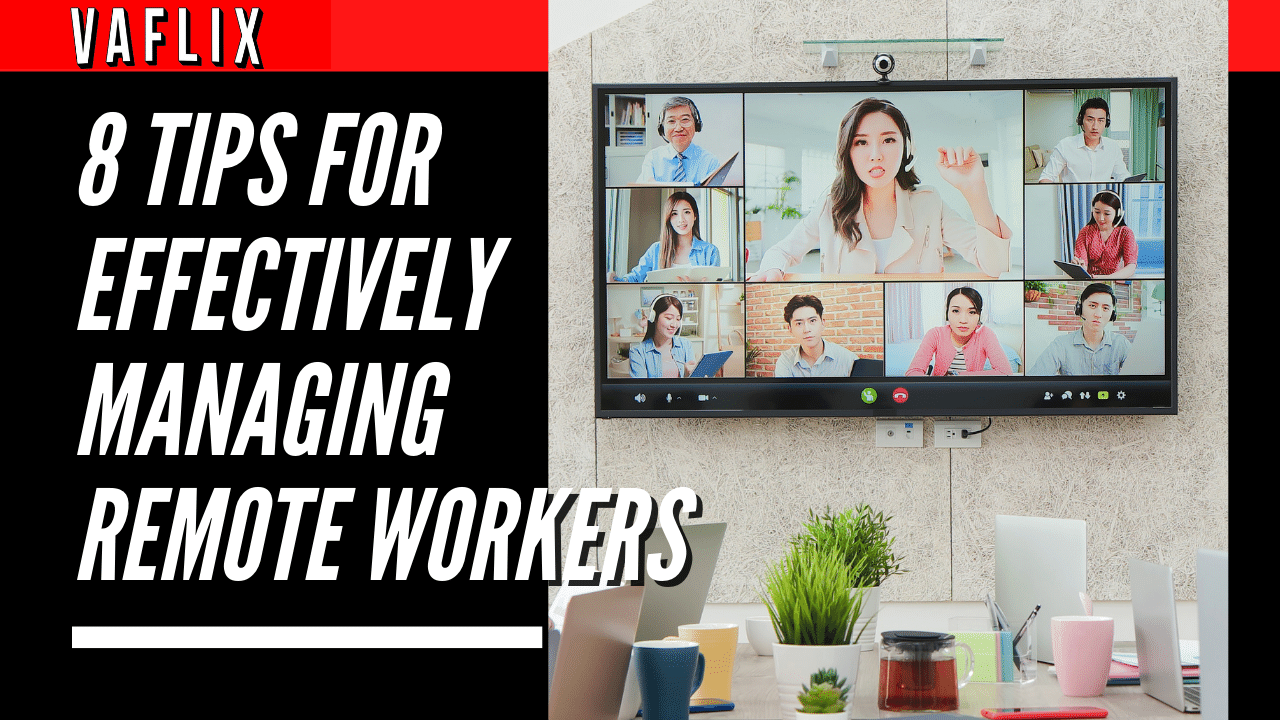8 Tips For Effectively Managing Remote Workers
Thinking of Hiring a Virtual Assistant?
Even among businesses that maintain physical locations for their operations, the use of remote workers is becoming more widespread. Today, an increasing number of businesses are forming remote teams.
Working remotely has made it easier and more interesting to collaborate on international projects with several teams. It makes no difference when a member of a team logs into a shared collaboration platform, whether they are located ten feet away from another team member or ten thousand miles away from another team member.
Employment at a distance may be advantageous for employees as well as employers, but it also comes with its own set of problems that must be overcome. Recent years have seen an explosion in the practice of remote work across almost all sectors of the economy, and it is rapidly becoming the standard for workers in other countries.
There are a few things that you can do to make sure that your workers who telecommute are as productive as they possibly can be. The following advice will assist you in managing your team and making the most of the contributions made by your remote workers.
1. Make clear goals
According to Scott Bales, vice president of Replicon, providing rules, establishing limits, and examining the fundamentals are some of the most crucial measures to take before beginning a project.
It is critical to the success of both your team as a whole and the productivity of your workers who work remotely that you make it clear what it is that needs to be done as well as the procedure.
When the employee is aware of what is expected of them in terms of work hours and attendance standards, they will have a better chance of meeting and exceeding those expectations.
2. Set clear communication guidelines
Those who work remotely have a greater propensity to let communication go by the wayside and to give their teams significant leeway to function on their own. On the other hand, doing so will not be fruitful in the long term. Instead, you will need to establish a virtual team presence that everyone on the team can relate to and be at ease with.
The onboarding process must have communication standards for newly hired employees, which should include the following:
- The team should ideally communicate with each other using the following channels: phone conversations, text messaging, emails, social media, and any other platforms.
- The days of the week on which preferred forms of communication take place, such as weekly meetings, daily updates, or quarterly evaluations
- duration of time that is anticipated to be required to complete activities.
- Details on the dress-down Fridays and other team activities that take place throughout the year.
- Details on their location, assuming that this is not their usual place of business.
3. Choose internationally available software.
Make sure that once they have internet connectivity, members of your remote team may still collaborate with the rest of the team on remote platforms. It is easy for a domestically based team to forget that not all software and online services are accessible on a global scale because of their distant location. If you have team members located in various countries, you should look for platforms that are accessible worldwide. Groove, Slack, Microsoft Teams, G Suite, World Time Buddy, and Papaya are some of the tools that may be used to manage a multinational team.
If you have already constructed your software stack, you are able to establish the requirements your team needs for the purchase of equipment, and you can even pre-install the software on laptops before they are sent.
4. Create a virtual break room
Holding frequent team meetings is a wonderful idea when it comes to managing remote staff, but it’s not enough on its own. It is important for members of a team to communicate with one another in a natural and unprompted manner, as well as to get to know one another beyond their role as employees.
In addition to that, you should encourage the members of your team to talk about their personal lives and discuss the experiences they’ve had. Using video conferencing while brain storming these ideas on a digital whiteboard has the advantage of naturally leading to more unplanned and impromptu conversations, which help to foster creativity and bring the best ideas out of your team members. This is a benefit that can be achieved by using video conferencing.
5. Gather regular feedback
Gathering input is vital, whether you are transitioning to a remote model for the first time or even if it is a process that you will continue in the future to ensure that it is working well for your team.
Receiving feedback enables you to locate areas of weakness, things that need to be altered, and even things that aren’t functioning properly. This may be accomplished in a number of ways, including the following:
- Individually. Hold one-on-one sessions with each employee, and while you have their undivided attention, inquire as to whether or not they think the procedures in place are effective.
- Polls. By taking part in anonymous polls or surveys, you may receive essential information about the company’s operations that will help you make intelligent judgments.
- Workshops. If you’re able to do in-person seminars, you should put your team’s trust-building efforts and problem-solving efforts there
6. Provide emotional support
You are well aware that prolonged periods of solitude may have a detrimental impact on the mental health of the members of your team. Nevertheless, there are a few other methods in which you may demonstrate your support for the cause.
- You shouldn’t put too much stock in what other people have to say to you. Inquire, then make an effort to pay attention to the answers. It does not cost anything to ask a member of the team, “How are you doing?” when the call is coming to a close.
- Exercise some compassion. Simply being made aware of the existence of any issues is insufficient. Additionally, it is necessary for you to comprehend them.
- Focus on values. Even if you change the way you operate, it is critical to keep the core principles of the organization in mind at all times. Make use of them in order to both motivate and assist the members of your remote team.
- Develop many sources of assistance. When coping with personal concerns, it might be beneficial to speak to and listen to other people in the same situation. The development of better communication within your team might be facilitated by the creation of online meeting groups.
7. Be flexible
The management of a geographically dispersed multinational team is not always simple. Additionally, there is a possibility that exercising flexibility in some professions may be more difficult (contact center staff, for example). Nevertheless, this does not imply that you should exercise excessive control over your employees working remotely.
For instance, you should let your employees work during the hours that are most convenient for them. Your team should be held accountable for meeting the deadlines that you set for the various tasks they are responsible for. Not only is it necessary for workers, but also for managers of remote teams to have flexibility in their schedules.
8. Remember to listen
The majority of great managers have excellent listening skills. Surveys, on the other hand, are a tool that is often misused. A monthly or quarterly employee net promoter score, in addition to one-on-one meetings, are important tools for gaining a deeper understanding of the attitudes and opinions held by staff members.
It is important to keep in mind that listening abilities help a manager to comprehend the objectives and emotions of their team, making them an essential ability for team management. If you make an effort to listen to your workers’ concerns and encourage them to provide their best efforts for the team, you will find that they are more motivated as well as more receptive to your criticism.
You’ll become an expert at managing remote employees in no time.
You could be worried about managing teams that are located in different locations. However, there is no reason for this to be the case. We may anticipate that the workplace of the future will be more conducive to working remotely due to the perks that come with increased productivity.
By following the suggestions that were shown above, you may have an efficient and productive international remote workforce. This is possible even if your organization is transitioning to remote or hybrid work.



















